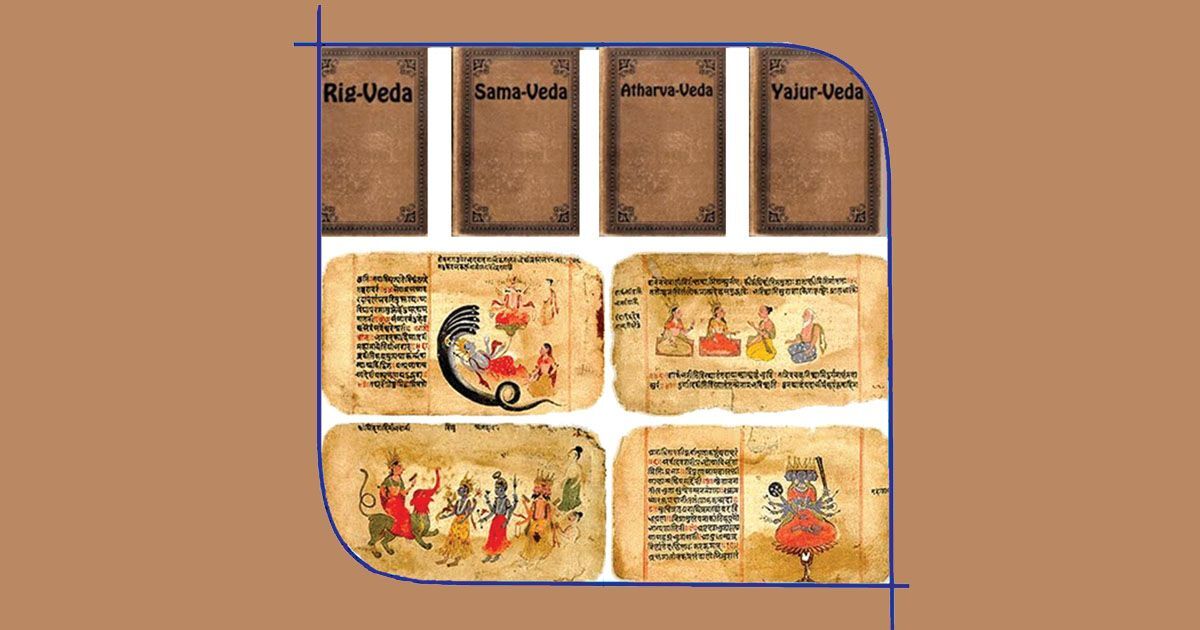
Part E3: EARLY AND THE LATER VEDIC PHASE
LakshyaforIAS,
Guwahati.
https://www.facebook.com/Lakshyaforias-233850620321465/
The Vedic Age was between 1,500 BC and 600 BC, during which the Vedas were composed. The Vedic Age started with the coming of the Aryans or Indo-Aryans.
INDO-ARYAN MIGRATION TO VEDIC CIVILISATION
• The original homeland of the Aryans is a matter of debate with different experts suggesting different regions from where they originated.
• Some say they came from the area around the Caspian Sea in Central Asia (Max Mueller), while others think they originated from the Russian Steppes.
• The Vedic Age started with the Aryan occupation of the Indo-Gangetic Plains.
• They led a rural, semi-nomadic life.
• It is believed that they entered India through the Khyber Pass.
EARLY VEDIC PERIOD OR RIG VEDIC PERIOD (1500 BC – 1000 BC)
Initially, the Aryans lived in the land known as Sapta Sindhu (Land of the Seven Rivers) – Sindhu (Indus), Vipash (Beas), Vitasta (Jhelum), Parushni (Ravi), Asikni (Chenab), Shutudri (Satluj) and Saraswati.
Political structure:
• Monarchical form of government with a king known as Rajan.
• Jana was the largest social unit in Rig Vedic times.
• Tribal assemblies were called sabhas and samitis.
Social structure:
• Women enjoyed a respectable position. They were allowed to take part in sabhas and samitis. There were women poets too (Apala, Lopamudra, Viswavara, and Ghosa).
• Monogamy was practised but polygamy was observed among royalty and noble families.
• There was no child marriage.
Economic structure:
• They were a pastoral and cattle-rearing people.
• They practised agriculture.
• Cotton and woolen fabrics were spun and used.
• Initially, trade was conducted through the barter system but later on, coins called ‘nishka’ were in use.
Religion:
• They worshipped natural forces like the earth, fire, wind, rain, thunder, etc., by personifying them into deities.
• Indra (thunder) was the most important deity. Other deities were Prithvi (earth), Agni (fire), Varuna (rain) and Vayu (wind).
• Female deities were Usha and Aditi.
• There were no temples and no idol worship.
LATER VEDIC PERIOD OR PAINTED GREY WARE PHASE (1000 BC – 600 BC)
During this time, the Aryans moved eastwards and occupied western and eastern UP (Kosala) and Bihar.
Political structure:
• Kingdoms like Mahajanapadas were formed by amalgamating smaller kingdoms.
• King’s power increased and various sacrifices were performed by him to enhance his position.
• The sabhas and samitis diminished in importance.
Social structure:
• The Varna system of social distinction became more distinct. This became less based on occupation and more hereditary.
• Each Varna had a diverse set of functions. The first Varna were Brahmins. They were expected to study and teach the Vedas, and execute sacrifices and rituals. Kshatriyas were the second Varna. They were likely to fight battles and guard the nation. The third group was the Vaishyas. They were expected to be farmers and traders. Both the Kshatriyas and the Vaishyas could do sacrifices. Shudras were the fourth Varna. They were supposed to serve the other three groups. They could not perform any rituals.
• Frequently, women were also grouped with the Shudras. Both Shudras and women were not allowed to learn the Vedas.
• Women were not permitted to attend public assemblies like sabhas and samitis. Their position in society diminished.
• Child marriages became common.
• Sub-castes based on occupation also emerged. Gotras were institutionalised.
Economic structure:
• Agriculture was the chief occupation.
• Industrial work included metal work, pottery and carpentry.
• There was foreign trade with far-off regions like Babylon and Sumeria.
Religion:
• Prajapati (creator) and Vishnu (preserver) became important gods.
• Importance of prayers diminished and, rituals and sacrifices became more elaborate.
• The priestly class became very powerful and they dictated the rules of the rites and rituals.
• Indian epics like the Mahabharata and the
Ramayana were also composed during this period.
VEDIC LITERATURE
The Vedas form the oldest scriptures of Hinduism and the oldest layer of Sanskrit literature. They are said to have passed on through verbal transmission from one generation to the next. Therefore, they are also known as ‘Shruti’.
Types of Vedic literature
Vedic literature can also be classified into the following categories:
• The four Vedas – Rig, Sama, Yajur, and Atharva, and their Samhitas.
• Brahmanas
• Aranyakas
• Upanishads
Vedas
• The Rig Veda is the oldest religious text in the world. It contains 1,028 hymns and is classified into 10 mandalas.
• Yajur Veda deals with the ways of performing rituals.
• Sama Veda deals with music. Indian music is said to originate from the Sama Veda.
• Atharva Veda contains spells and magical formula.
• The mantra text of each of the Vedas is called Samhita.
----------------------------------------------------------
To enroll in General Studies batch (as per new syllabus), contact us at 8472050855/6002528519.
